On a weekday morning, the grassy San Ysidro Community Park is mostly empty, save for two artists weaving gigantic balls of cloth strips into blankets, but the streets that surround it are bustling. Trolleys nudge across the park's northernmost edge, adding an almost musical backdrop of regular horns and crossing bells. Birdsong joins in, as does the steady hum of nearby freeway traffic — the tiny park is situated near the convergence of Interstates 5 and 805 just north of the U.S.-Mexico border.
"We thought that it would be a really beautiful thing to do for a project because the community is right around the project, it's right around the park, right around the area and we thought that was important," said artist Yvette Roman, one of the selected artists in the City of San Diego's Park Social initiative.
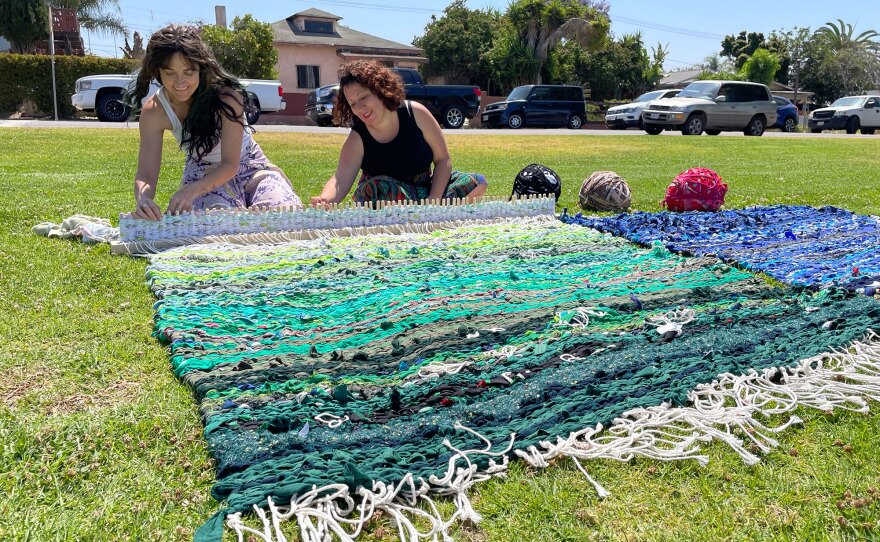
A public art lifeline in a dire time
Park Social was introduced in May 2020, when artists, performers and arts organizations faced immediate and future uncertainty. Funding for the arts had just been slashed by 50%, and with events and museums on hold, the creative opportunities seemed as dire as the finances.
The city's top arts administrator, the executive director of the Commission for Arts and Culture, Jonathon Glus, remembers the need for immediate economic action.
"We knew that here in San Diego, individual artists were going to be among the very hardest hit, and we had to do something about that," Glus said. "All of their sources of income just went flat immediately."
It was with that sense of urgency, he said, that they launched the twin initiatives: SD Practice and Park Social. SD Practice — already completed — bought approximately 100 works of art from local artists for the civic art collection. Park Social took a little more lead time.
Park-specific art
The City of San Diego has more than 42,000 acres of parkland — Glus said it's one of the largest park systems in the country, and is also one of the most diverse topographically.
Artists submitted a whopping 154 proposals for just 18 project slots. A total of 23 artists or collectives were selected by a panel — and then the artists were assigned a district based on their requests.
From May 21 through Nov. 20, 2022, the art installations and site-specific projects will be activated across the city. Some events, workshops and activations take place this weekend, following the launch, and some projects won't be activated until later in the summer or early fall.
The selected artists and organizations are Allison Wiese, Armando de la Torre, Art Builds, Beck Haberstroh, Brian & Ryan, Brian Goeltzenleuchter, David White, Ingram Ober, Kasi Muñoz, Katie Giritlian, Keenan Hartsten, Kline Swonger, Margaret Noble, Mario Mesquita, Mario Torero, Marisol Rendón, Roberto Salas, Sarah Bella Mondragon, Sheena Rae Dowling, Timothy Murdoch, Trevor Amery, Yvette Roman and Zaquia Mahler Salinas (with Disco Riot).
A full schedule is available here, and a map of each site can be found here.
"We really saw San Diego artists as the creators of a map. As the ones who could encourage us to think differently about our parks system and natural environment, but also to surprise us. To slow us down a little bit, to think about beauty," Glus said.
In addition to experiencing parks in a new way, there's also the art.
"To experience contemporary art in an unexpected way, a surprising way. If contemporary art is not part of your regular life, to have the opportunity to experience it in a very informal way. And at the end of the day, to celebrate the vast, vast creativity of our region's artists." Glus said.
'Collective Memory'
Sheena Rae Dowling and Yvette Roman are frequent collaborators, though the work they're doing for Park Social is more based on the site — and the times — than anything they've done in the past.
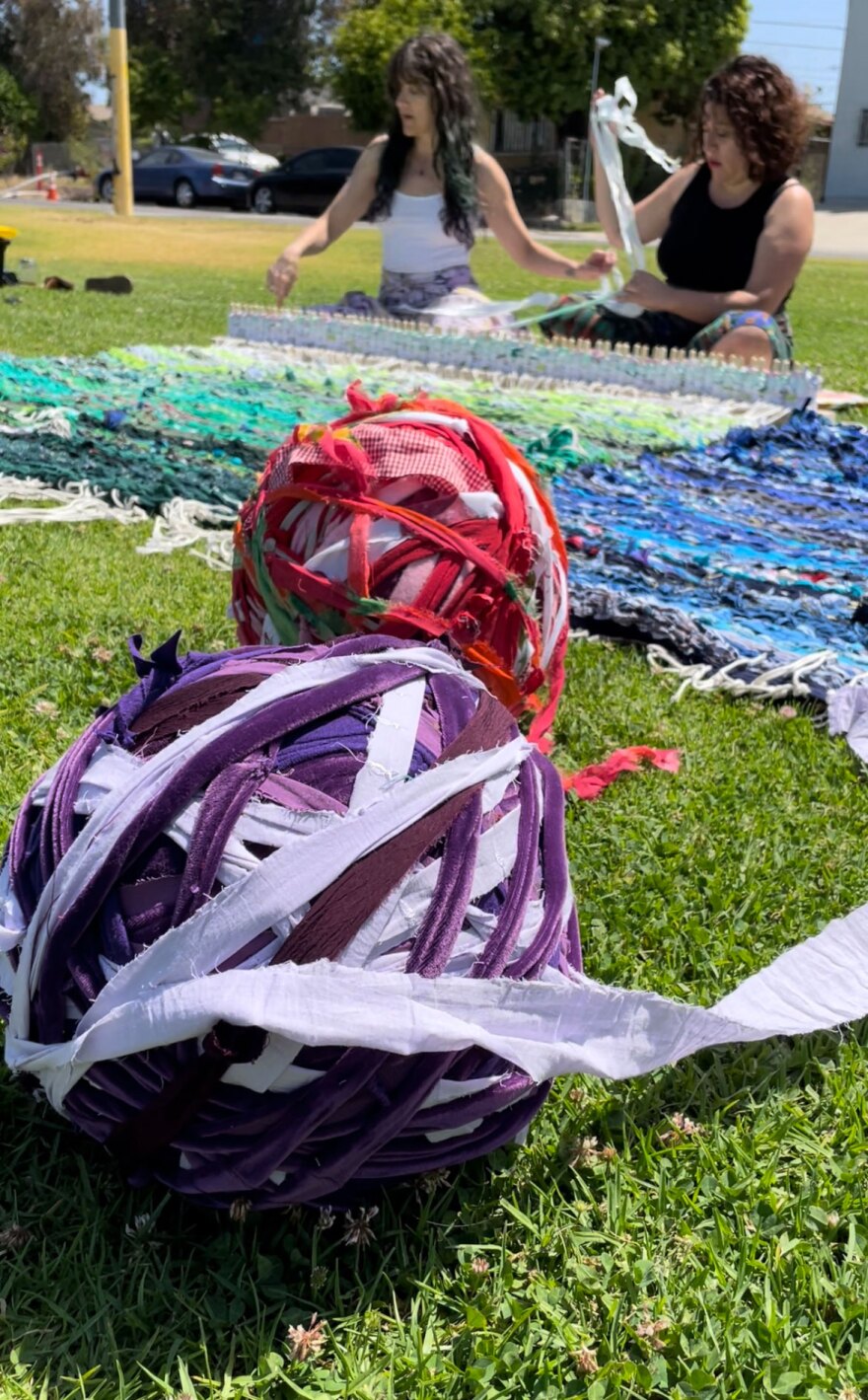
"We did try to really think about making it site specific, making it sort of reflective of what's been going on over the last couple of years, and think about a way that we could serve the community and the public in a thoughtful way — and a lot of our work is trauma-informed care," Dowling said.
Dowling and Roman gathered discarded clothing from the community — and will continue to do so before the culminating event and picnic on July 16.
They cut the garments into long strips of fabric, then sorted them by color and strung them together into balls of "yarn." Using a homemade loom, this yarn will become blankets.
"Every single fabric in these blankets has a story. They've been worn, they've touched people's bodies, they have that essence of who wore it — even the smell sometimes, which is kind of interesting," Roman said.
In two "Memory Collection Workshops" — one on Saturday, May 21 from 3-5 p.m. and another June 18 — the public can help weave the blankets, and submit three words about their pandemic experience, as well as learn how to stamp those words onto fabrics to hang in the final installation, a textile tent-like "Memory Dome."
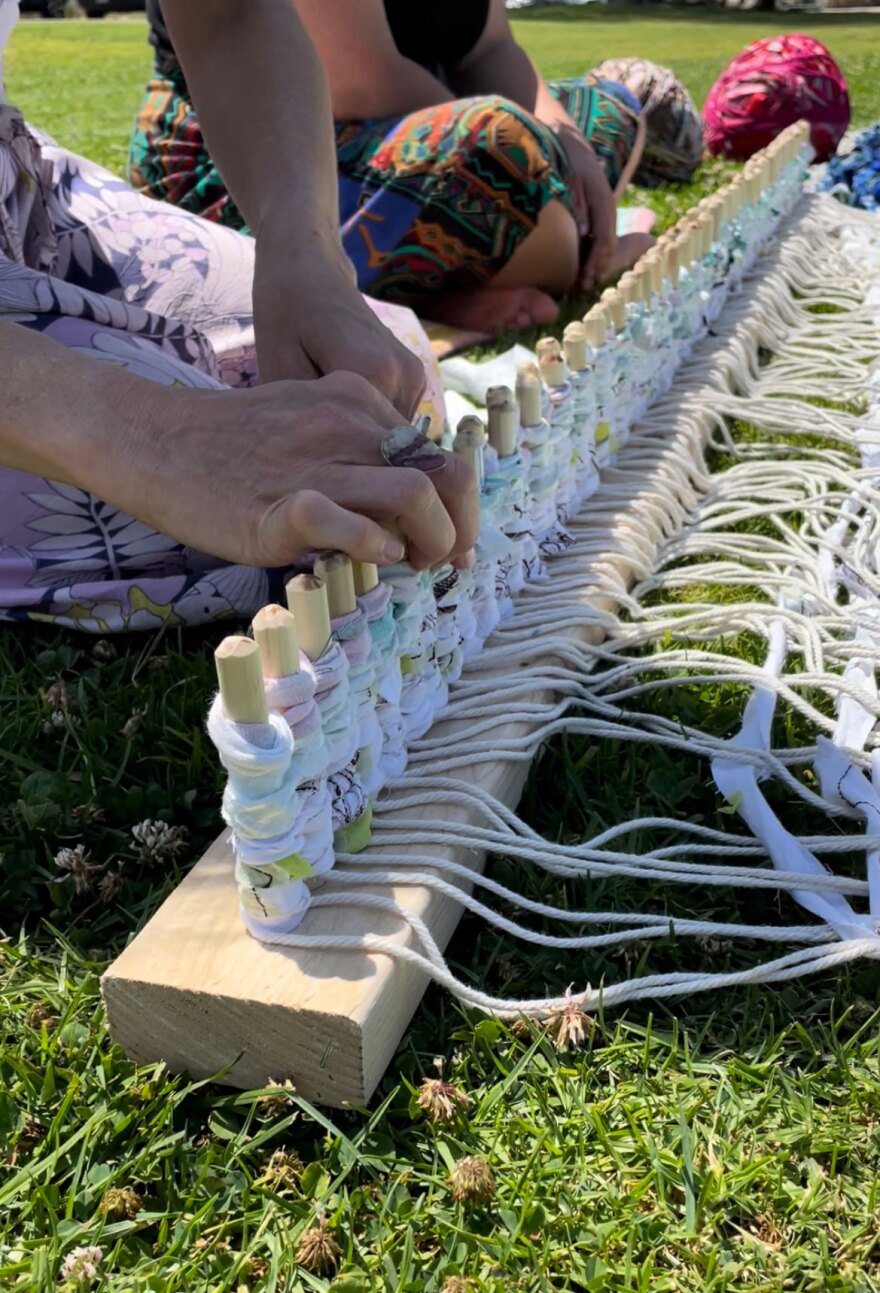
Dowling and Roman are both educators, so they wanted something that they could easily teach to the community, and that could be easily recreated at home.
"We're kind of talking about this idea that art and the creative process is something that we use to get through our trauma — and this idea of emotional regulation through an art-based process. I mean, both of us believe in that. That's why we teach art," said Dowling.
Brian & Ryan tackle Chollas Lake
"Everything about this place is naturally artificial, I guess, or this beautiful sort of combination of nature and artificiality," said Brian Black, one half of the eccentric, collaborative artist duo known as Brian & Ryan.
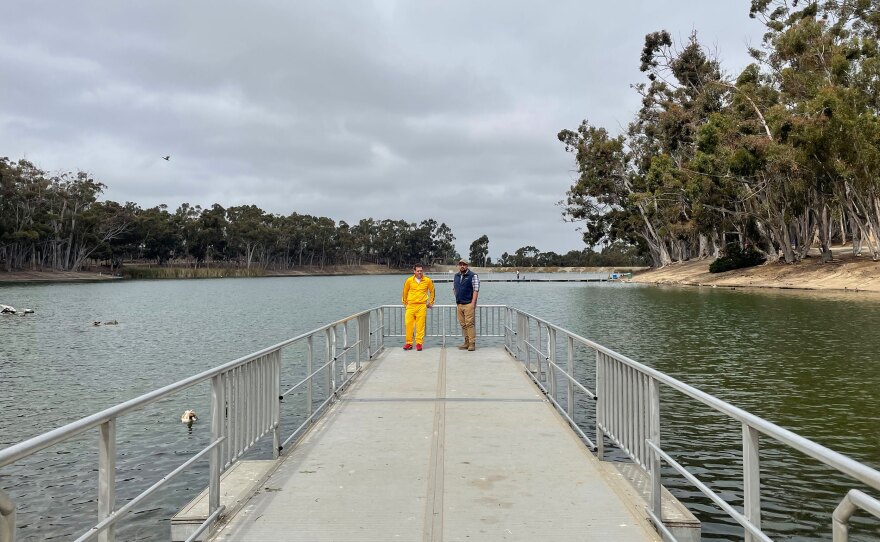
Chollas Lake itself was built as a reservoir in 1901 and is now stocked as a "youth fishing lake," where only people ages 15 and under can fish. Non-native eucalyptus trees dot the perimeter, and multiple play structures, "parcourse" fitness equipment and benches are placed around the 0.8 mile loop trail. Even some of the ducks and geese are abandoned domesticated animals, according to Brian & Ryan.
Despite the park's debatable natural authenticity, the artists find the area authentically delightful, a true community hub and some children's first experience with nature, and a living entity in and of itself.
"There was just something about Chollas, where the people, they're here every day some of them. There's just something really beautiful about the park and the opportunity for discovery here," Black said.
Their project seems as much a residency as it is an installation. The pair were even granted a small shack near the dock — close to a gathering of chairs where a group of retirees sits every morning.
"There's an obvious ownership over the park by all the parkgoers. Even though we visited every other park in our district, some of them seem more ornamental, whereas this park people are participating in every possible way. And it didn't take long just walking around the park where people would ask us what we were doing," said Ryan Bullis, the "Ryan" half of Brian & Ryan.
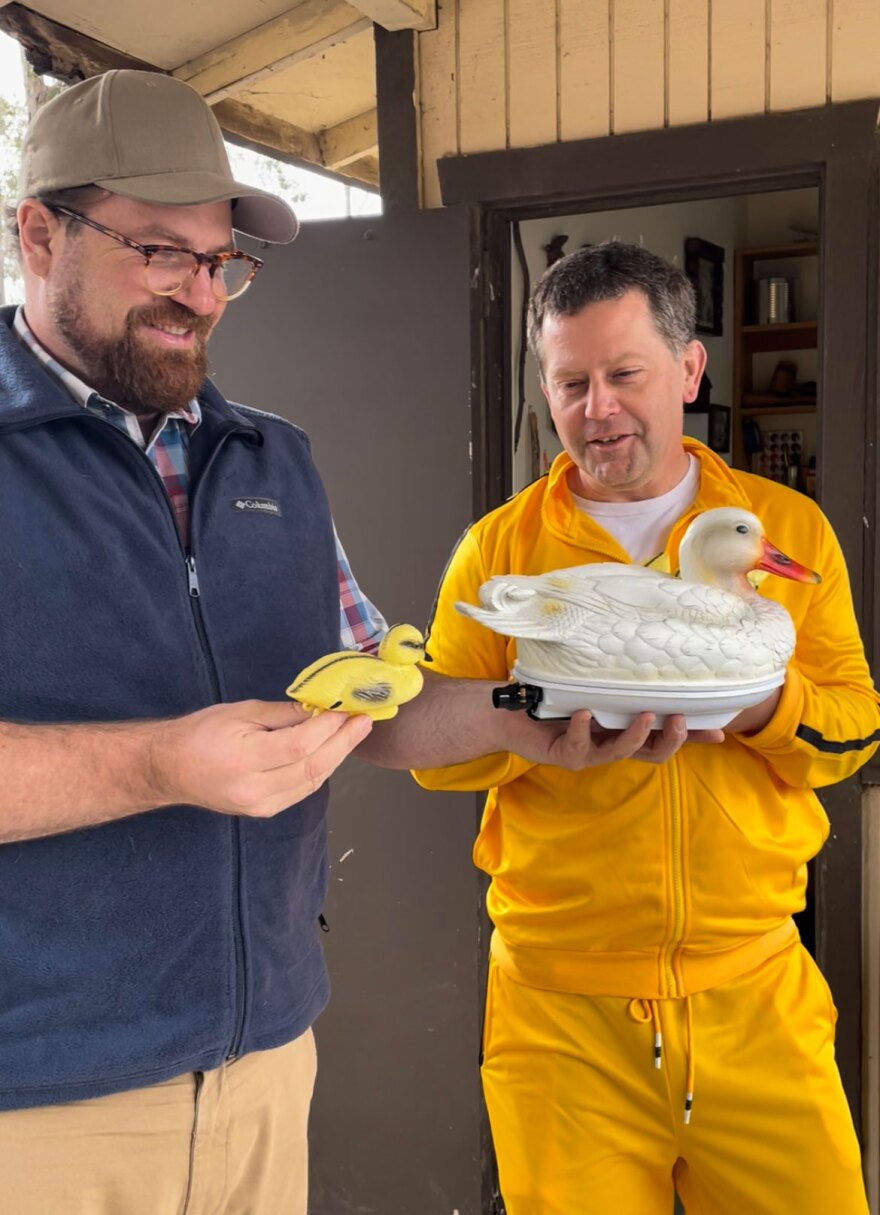
The multiple components to their project all serve their central aims: discovery of nature and community, as well as legitimizing and exploring the park's lore and history, ranging from personal memories to crytozoology-style legends.
"The first story we collected was a fish story. And they told us how big the fish was they caught," Bullis said.
Whether shadows in the trees, or creatures in murky waters, people are drawn to lore, especially in nature — the quintessential campfire story.
"There's some convergence of the way people will tell their own story, tell stories of things they've seen here, and we want to participate in some of that production of lore," Bullis said.
The project is also marked with Brian & Ryan's signature humor, absurdity and genuineness.
They're also holding several can phone workshops throughout the afternoon this Sunday, May 22, attempting to string a traditional can phone across the lake for visitors to communicate with each other.
Later in the summer, they'll hold a fishing lure workshop — their hub is adorned with a variety of lures hung up like works of art. On June 25, they'll launch an eerily realistic remote control duck and dozens of ducklings, modeled after a specific duck on the lake. This appeals to their desire to create new lore.
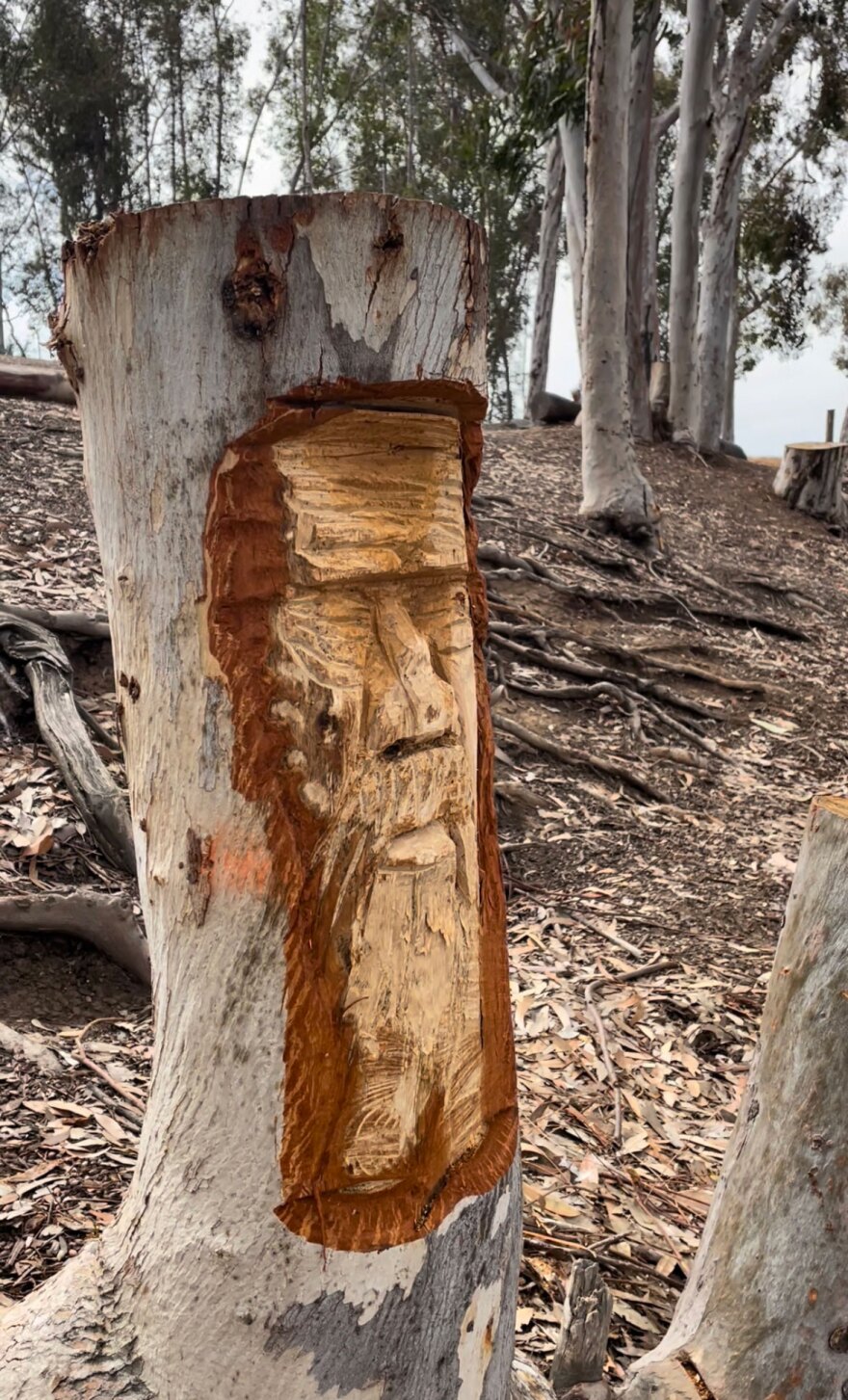
Already underway is a series of carvings on eucalyptus stumps. Using just battery-powered tools, they've carved faces into several stumps near their hub, and some they've polished to an unnatural perfection.
Ultimately, they plan to install a billboard-style collection of stories and memories, as well as to compile several printed guidebooks and activity books.
'In Collaboration with the Passerby'
Unlike Brian & Ryan's well-used recreational park or Dowling and Roman's approachable, neighborhood greenbelt, married couple Marisol Rendón and Ingram Ober opted for a wilder, less understood park. They wanted to focus on discovering something.
The Otay Valley Regional Park is a network of more than eight miles of trails connecting the South Bay with the lower Otay Reservoir.
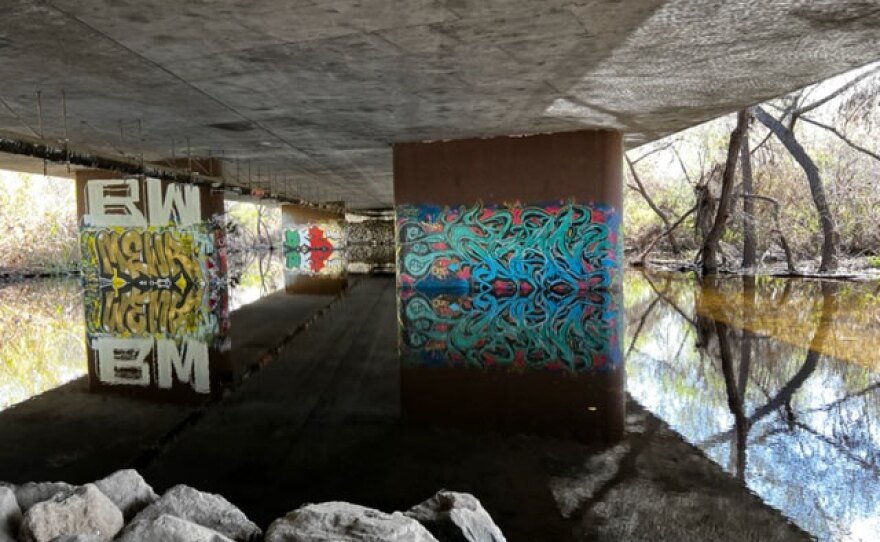
"We couldn't get a sense for what the park was, how big it was just from the maps. Each time we pulled up to a little trailhead kiosk, it presented a very different idea of what the park was, whether it was a developed site or a small bike park," Ober said. "So all of it was sort of wrapped up in questions and discoveries. And so that, to us, is the most interesting point of entry."
Rendón added: "A place that we can learn from, basically, and feel excited about, and research and just present something else rather than just the structure of our sort of individual practice."
Rendón and Ober identified several users of the park they wanted to create installations for, or at least with them in mind. One is the population who live in encampments within the park.
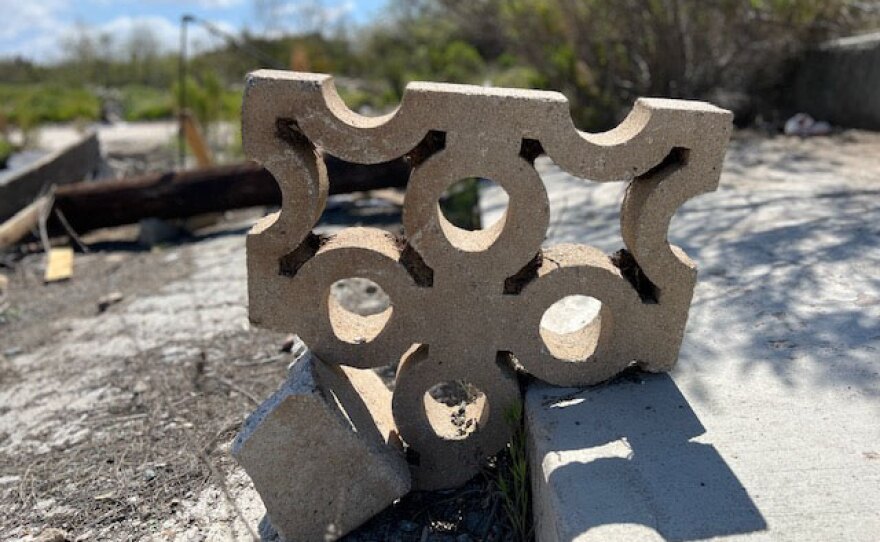
"One of our sculptural works is meant to engage in an area where there is a lot of debris from the encampments, where we have found really interesting aesthetic assemblages that are not functional," Ober said. "Somebody is arranging things in a way that's poetic, it's beautiful. It's hard to convince people that trash is beautiful. And of course, in a watershed, it has issues, but there are aesthetic choices being made, and we are interested in that."
The metal and mesh sculpture will eventually be removed, taking with it any debris accumulated inside the sphere — a bonus function.
Another sculpture will be installed near an area where graffiti artists create elaborate murals. One more will be created out of invasive pampas grass the rangers helped them harvest from the space. This one, they hope, will be for the substantial wildlife population in the park, an experiment as to whether birds, insects and reptiles interact with it in any way.
This Sunday, May 22, the public can participate in the pampas grass sculpture workshop at the Otay Valley Regional Park ranger station from 11 a.m. to 2 p.m.
Project launch
Park Social will officially launch at Fault Line Park on Saturday, May 21 with an ice cream social at 11:30 a.m. followed by a performance art piece, "Walking the Wall," by Timothy Murdoch, featuring several of the other artists.
"A lot of San Diego artists really excel in community engagement and public participation. And giving them the opportunity, providing them the opportunity to actually do that in unregulated public space was really important to us. We think that is also part of encouraging the community to think differently about art," said Glus.






